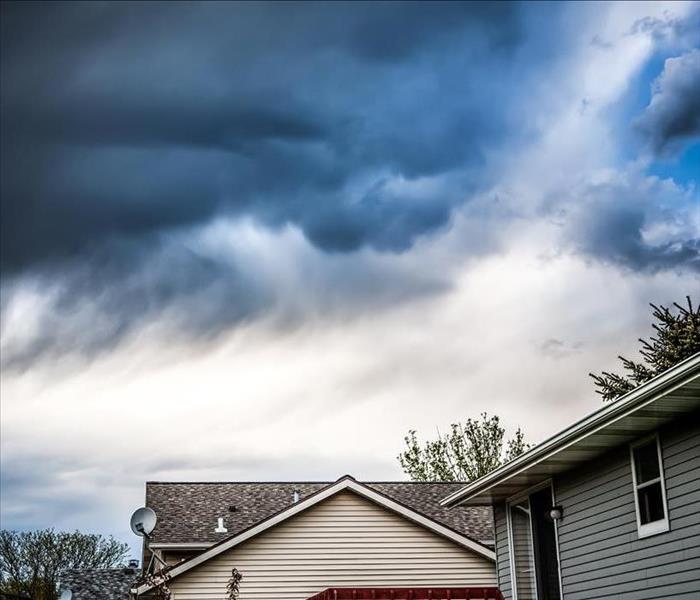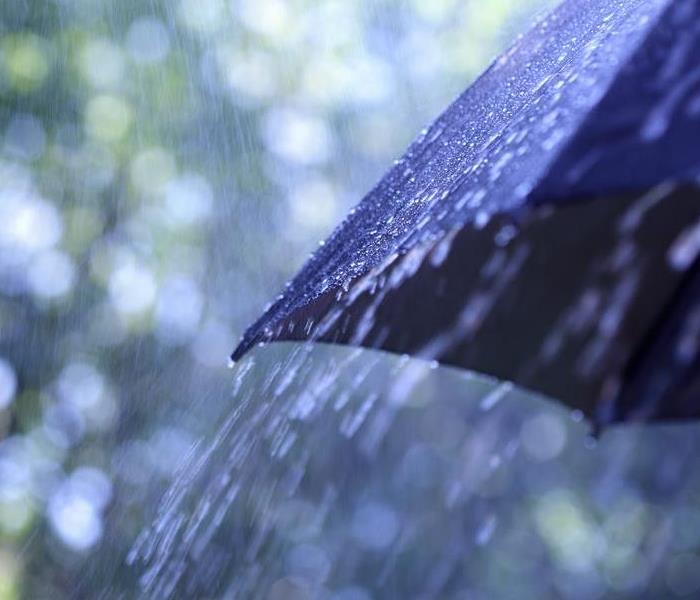Recent Storm Damage Posts
Winter-Ready Wheels: Preparing Your Car for Northeast Winter Storms
1/8/2024 (Permalink)
As the Northeastern United States braces for winter storms, ensuring your car is ready for the challenges of icy roads and snow-covered landscapes becomes paramount. In this blog, we'll explore essential steps to prepare your car for Northeast winter storms, safeguarding your safety and mobility in the face of wintry conditions.
Check Your Battery
The cold temperatures of winter can put additional strain on your car's battery. Before the storm hits, have your battery tested to ensure it's in good condition. If it's more than three years old, consider replacing it. Adequate tire tread is crucial for traction on icy roads. Inspect your tires for signs of wear and tear, and ensure they are properly inflated. Consider switching to winter tires for enhanced grip in snowy conditions.
Install Winter Wiper Blades
Visibility is key in winter weather. Install winter-specific wiper blades designed to handle snow and ice. Top up your windshield washer fluid with a winter-grade solution to prevent it from freezing. Ensure all essential fluids—engine oil, coolant, brake fluid, and transmission fluid—are at the recommended levels. Consider using winter-grade oil for improved engine performance in cold temperatures.
Inspect the Brakes
Winter roads can be slippery, making efficient brakes crucial. Have your brakes inspected and replace worn brake pads. A well-functioning braking system is essential for safe winter driving. Before winter sets in, test your car's heater and defroster to ensure they are in working order. A functioning heater keeps you warm, while a reliable defroster maintains clear visibility.
Carry a Winter Emergency Kit
Equip your car with a winter emergency kit containing essentials such as blankets, extra clothing, a flashlight, non-perishable food, a first aid kit, and necessary medications. In case of a breakdown, having these items can make a significant difference. A properly functioning exhaust system is essential for preventing carbon monoxide from entering the car's interior. Inspect for leaks and ensure the exhaust pipe is clear of snow before starting your vehicle.
Verify Four-Wheel Drive System
If your car has four-wheel drive, test the system to ensure it engages and disengages smoothly. Four-wheel drive can provide additional traction in snowy or icy conditions. Keep a snow shovel, ice scraper, and a bag of sand or kitty litter in your trunk. These items can help you clear snow around your tires and provide traction if you get stuck.
Plan Your Route
Before heading out, check the weather forecast and road conditions. Plan your route, allowing for extra travel time and avoiding areas prone to congestion or hazardous conditions. A full tank of gas is not only practical in case of an unexpected detour but can also prevent fuel lines from freezing. Try to keep your tank at least half full during the winter months.
Charge Your Phone
A fully charged phone is a valuable asset in case of an emergency. Keep a car charger in your vehicle and ensure your phone is charged before embarking on winter journeys. Consider scheduling a winter maintenance check with a qualified mechanic. They can inspect your car for any issues that might impact winter performance and address them before they become more significant problems.
Finally, drive cautiously in winter conditions. Increase your following distance, reduce speed, and avoid sudden movements. Familiarize yourself with proper winter driving techniques, such as steering into a skid, to enhance your safety on the road. By taking proactive steps to prepare your car for Northeast winter storms, you not only enhance your safety but also contribute to smoother and more resilient winter travel. Stay vigilant, stay prepared, and stay safe on the winter roads of the Northeast.
How Climate Change Alters Storm Frequency and Intensity on the East Coast
9/11/2023 (Permalink)
 By acknowledging these changes, we can better prepare for the challenges that storms may bring and take steps to protect our homes.
By acknowledging these changes, we can better prepare for the challenges that storms may bring and take steps to protect our homes.
As homeowners and property owners on the East Coast, it's essential to be aware of the changing weather patterns and the impact climate change has on storm frequency and intensity in our region. Over the past few decades, there has been growing evidence linking climate change to more frequent and severe storms. In this blog, we'll explore how climate change affects storms on the East Coast and discuss steps you can take to prepare for the potential challenges they bring.
The Link Between Climate Change and Storms
Climate change, primarily driven by human activities, leads to a rise in global temperatures. As the Earth's temperature increases, it disrupts the balance of the atmosphere, causing changes in weather patterns. This disruption contributes to the intensification and increased frequency of storms on the East Coast.
More Frequent and Severe Hurricanes
The warming of the oceans provides more energy for hurricanes to develop and strengthen. Consequently, the East Coast has experienced an increase in the frequency and intensity of hurricanes in recent years. These storms can bring devastating winds, storm surges, and heavy rainfall, leading to extensive property damage and posing a significant threat to coastal communities.
Rising Sea Levels and Storm Surges
One of the consequences of climate change is the melting of polar ice caps, leading to rising sea levels. As a result, storm surges during hurricanes and severe storms have become more destructive, causing coastal flooding and erosion. Property owners along the coast should be especially vigilant and take necessary precautions to protect their homes from these increasing risks.
Increased Precipitation and Flooding
Climate change also alters precipitation patterns, causing more intense and prolonged rainfall events. This increased rainfall can lead to severe flooding, even in regions not typically prone to such disasters. Property owners should evaluate their homes' drainage systems and consider installing measures to mitigate the risk of flooding.
Heat Waves and Extreme Heat Events
In addition to hurricanes and heavy rainfall, climate change contributes to more frequent and prolonged heatwaves on the East Coast. Extreme heat events can damage properties, strain energy resources, and pose risks to residents. Taking measures to improve your home's energy efficiency and installing cooling systems can help you stay comfortable during such extreme weather events.
Preparing for Climate Change-Related Storms
To better cope with the impact of climate change on storm frequency and intensity, homeowners and property owners can take several proactive steps:
- Stay Informed: Keep yourself updated on climate change research and storm forecasts in your area. This information can help you make informed decisions to protect your property and loved ones.
- Invest in Resilient Infrastructure: Consider fortifying your home against potential storm damage by installing storm shutters, reinforcing doors and windows, and securing roof structures.
- Elevate and Protect: If you live in a flood-prone area, elevate your home and consider investing in flood insurance to mitigate the financial impact of potential flooding.
Understanding the impact of climate change on storm frequency and intensity on the East Coast is vital for homeowners and property owners. By acknowledging these changes, we can better prepare for the challenges that storms may bring and take steps to protect our homes, communities, and the environment. Let's work together to build resilience and embrace sustainable practices to mitigate the effects of climate change and safeguard our properties for future generations.
Protect Your Home with Landscaping: Techniques to Keep Your Property Safe from Natural Disasters
6/12/2023 (Permalink)
 Landscaping can help protect your property from a natural disaster.
Landscaping can help protect your property from a natural disaster.
Landscaping is more than just adding aesthetic appeal to your property. It can also be a valuable tool to help protect your home from natural disasters like floods, erosion, and even wildfires. In this blog, we'll explore some landscaping techniques you can use to safeguard your home.
Use Native Plants and Grasses
Native plants and grasses are specifically adapted to your region's soil and weather conditions, making them more resilient to natural disasters. These plants are also less likely to require excessive watering, which can help you conserve water in drought-prone areas. Additionally, native plants and grasses provide habitat for wildlife, helping to promote biodiversity.
Create a Rain Garden
Rain gardens are an excellent way to control water runoff and reduce the risk of flooding. A rain garden is a depressed area in your yard that is designed to capture rainwater and allow it to slowly seep into the ground. The plants in a rain garden are specifically chosen for their ability to tolerate both wet and dry conditions, and they help filter pollutants from the water before it enters the groundwater system.
Install a Retaining Wall
A retaining wall is a structure that holds back soil on a slope or hillside. Retaining walls can help prevent soil erosion and landslides, which can cause significant damage to your property. Retaining walls can be made from a variety of materials, including stone, brick, or concrete. Make sure to hire a professional to install your retaining wall to ensure it is properly engineered and constructed.
Mulch Your Garden Beds
Mulch is a layer of organic material, such as leaves, wood chips, or straw, that is spread over the soil in your garden beds. Mulch helps retain moisture in the soil, which reduces the need for watering. Additionally, mulch helps prevent soil erosion and compaction, which can damage plant roots. Mulch also provides a protective layer that can help insulate plant roots from extreme heat or cold.
Create a Fire-Safe Zone
If you live in an area prone to wildfires, it's essential to create a fire-safe zone around your home. This involves removing any dead or dry vegetation, such as leaves or brush, from within 30 feet of your home. Additionally, choose fire-resistant plants, such as succulents or ornamental grasses, for this area. Keep this area well-irrigated and free of debris.
In conclusion, landscaping can be a powerful tool to help protect your home from natural disasters. By choosing the right plants, installing retaining walls, creating rain gardens, and mulching your garden beds, you can reduce the risk of flooding, erosion, and landslides. Additionally, creating a fire-safe zone around your home can help protect it from wildfires. With these landscaping techniques, you can add beauty to your property while also protecting your home from nature's unpredictable forces.


 24/7 Emergency Service
24/7 Emergency Service

